 Two
Two Two
Two mid the lagoons at the head of the Adriatic Sea is found one of history’s most influential cities. Venice, a relatively modern polis founded in A.D. 421, was originally inhabited by refugees escaping the collapse of the Roman Empire. Settling among the sandbars, they took up a survivalist’s life of fishing and salt-making. In the century following, invasions from the north drove a substantial population into the settlement. By the age of Charlemagne during the eighth century, Venice was becoming a full-fledged city established in a birthright of liberty and independence.
mid the lagoons at the head of the Adriatic Sea is found one of history’s most influential cities. Venice, a relatively modern polis founded in A.D. 421, was originally inhabited by refugees escaping the collapse of the Roman Empire. Settling among the sandbars, they took up a survivalist’s life of fishing and salt-making. In the century following, invasions from the north drove a substantial population into the settlement. By the age of Charlemagne during the eighth century, Venice was becoming a full-fledged city established in a birthright of liberty and independence.
Early Venice was officially part of the Byzantine Empire, itself comprising remnants of the once very extensive Roman Empire. Byzantium was originally a Greek city; it was rebuilt by Roman Emperor Constantine the Great, who christened it Constantinople. Constantine became famous for suspending the persecution of Christians and adopting their faith in the early fourth century. As center of the Eastern Orthodox Church until the Ottoman takeover in 1452, Constantinople remained a city rich in Greek mythological, philosophical, and pagan knowledge. It is now known as Istanbul.
During the time of Charlemagne, King of the Franks and founder of the first empire (ca. A.D. 750–850) in Western Europe after the fall of Rome, Venice was Byzantium’s only possession in Northern Italy. The Lombard invasion had left most of the area to German rule. Although Constantinople’s claim to Venice did not amount to much, it served Venetians by providing legal protection from the German Empire.
By the tenth century, Venice had grown into a mature, independent city-state. Even as the Byzantine Empire diminished, Venice grew in power and stature. In terms of trade privileges and political alignments, there continued to exist a special relationship between it and Constantinople. Byzantium, by the turn of the millennium, had lost much of its territory to the forces of Islam. In the face of Rome’s ecclesiastical displeasure, Venetians established a thriving trade with the Muslim world. On the Western front, through a combination of diplomacy and guile, Venice continued to stave off repeated territorial claims by the Germans.
In the eleventh century, Normans captured southern Italy, Sicily, and all of the western and central Mediterranean bases of Byzantium and Arabia – except for Venice. At this time, the Byzantine Empire also came under attack by the Seljuk Turks. The Seljuk formed a Turkish dynasty that ruled throughout the Crusading period. It was in this milieu that Mamelukes brought playing cards down from Central Asia to Egypt, ultimately exporting them to Italy and beyond. The Byzantine Emperor appealed to Venice for help fighting further Norman incursions, for by then the city had built a significant naval fleet. Assisted by the Grecian navy, Venetians blocked the Northern men from continuing their conquests. With the death of Robert Guiscard, leader of the Norman takeover of Italy, the Adriatic was left to the control of Venice. No longer simply a Byzantine subject, Venice had become a valuable ally.
When the First Crusade commenced at the turn of the twelfth century, Venice was careful to adhere to a role of protecting Byzantine interests. This put the city at odds with other Italian city-states such as Pisa and Genoa. The Great Schism of 1054 had seen Christendom divide into Roman and Greek (Western and Eastern) Churches. Venice as a Western European state was unique in its tacit support of the Greek kingdom. At times, that support became more than diplomatic. In 1099, Venice sent its first large fleet into the First Crusade. The Venetian force was more interested, however, in crushing a Pisan fleet off the Island of Rhodes. Pisan ships had been raiding Byzantine islands. It was Venice’s aim to extract an agreement from Pisa to desist all trading in Romania. (“Romania” was the common name for the Byzantine Empire, as it was the continuation of the Roman Empire. Similarly, the Eastern Church was officially called the “Holy Roman Catholic Church” until the fall of Constantinople to the Ottomans.)
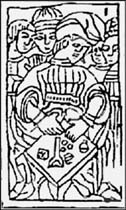
Blocks are encountered; instabilities arise and situations must be juggled.
When Venetians actually brought their forces to bear in the Outremer (the “overseas” of the crusaders, i.e., the eastern Mediterranean), they demanded a high return for their services. This took the form of trading rights throughout Asia Minor. Perhaps as importantly, Venice acquired the most potent of spiritual relics. For instance, the bones of St. Nicholas, patron saint of merchants, were exhumed and moved from Myra in Asia Minor (now southern Turkey) to a church on the Lido.
As we can see, Venice was the link between Europe and the East. The Tarot has as its foundation a structure of spiritual knowledge and practice that was well developed in Asia Minor by the time playing cards were imported to Europe by Venetians. Turkish culture that over the centuries integrated Greek and Sufi esotericism (along with Buddhism and schools of Alchemy and Tantra) created an exotic environment for Venetian merchants. They lived amongst a fascinating mix of military, civil, and spiritual laws and practices.
Venice served as the primary base for the Knights Templar during the two hundred years spanning the Crusades. Templars became the bankers and factors of Europe in relationship with the Eastern world. When their society of heretical monk-warriors was violently disbanded by the King of France early in the fourteenth century, the knights dispersed underground. Their human network and intricate knowledge of the mercantile and banking worlds connecting East and West were inherited in large part by the Venetians. Their esoteric alliances with Islamic Sufis, heretical Christian Gnostics, and Kabbalistic Jews engaged them with various underground teachings of spiritual hierarchy, which thrived in the major cosmopolitan trading centers of the Mediterranean: Constantinople, Alexandria, and Venice.
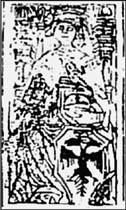
Manifestation of life force requires self-potential engaging in the constantly polar process of alchemy.
It is important to note that there existed two distinct streams of underground hierarchical transmission. A dualistic Gnostic stream was consistently at zealous odds with the established religious authorities of the time. This often developed into violent conflict. Within this stream flowed many varieties of sectarian beliefs. Put shortly, this stream was universally marked by the belief that an almost unbridgeable chasm existed separating the earthly world from the Divine Domain. You were either a member of the elite who adhered zealously to this view, and thereby had a chance of salvation, or you were one of the masses doomed to eternal damnation. Secret knowledge of hierarchical stages of psychological ascent was required to escape the fallen world.
The other stream also held to a reality of gnosis, or true knowledge of Kosmic Law, but championed a nondual understanding that the manifested world was already saved. The chasm supposedly separating it from the Divine Domain simply did not exist in reality. It was a fabrication of habitually wrong-minded views. In truth, the Divine emanated as the World. Historically, adherents of this position were more successful at diffusing potential conflicts with established religious and political bodies.
We will see in later chapters how important patriarchs of the Eastern Church embraced emanationist cosmology; how great Sufi saints enjoined this embrace; how a rich tradition of mystical wisdom-teaching was partner to the process; and how very similar the ways of spiritual hierarchy discerned by the Greeks and Sufis were with the most essential teachings of Buddhists and Kabbalists. Furthermore, we will discover how psychophysical alchemical practices became the primary method that enabled contemplatives to realize the full extent of enlightened hierarchy. The Tarot emerged as an outcome of this historically interconnected transmission of esoteric knowledge.
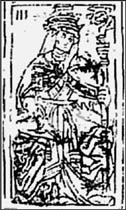
Attempting to find and benefit from the source of grace, rudimentary powers are developed – powers that must be structured if they are to be kept.
Venice, independent from Roman, Greek, or Muslim control, was the only Western province free to engage both Eastern and Western cultural centers without fear of religious or political retaliation (though the city-state was nonetheless involved in numerous self-serving military conflicts). Political, religious, and philosophical schism remained between Eastern and Western Christianity until the fifteenth century. By then, Byzantium had completely fallen to the Ottomans, and conflict between Eastern and Western Christianity was no longer significant. The West was finally free to re-embrace Greek philosophy and Eastern Christian metaphysics.
In Italy, Neoplatonism was given institutional support by the Medicis, famous rulers of Florence. Lorenzo de’ Medici re-created the Platonic Academy, which served as a haven for Eastern Orthodox scholars versed in Sufism. It was then that Florentines elaborated on this East-West union via the arts and humanities in what would become a renaissance of European culture and knowledge. The nonstandard Tarot decks mentioned in chapter 1 were derived from a Florentine re-creation of Sufi and Greek esoteric symbolism and iconography.
Development of the Renaissance, rebirth of Neoplatonism, and creation of the Tarot were all contingent on East-West interaction, at the core of which thrived a transformative stream of mercantile activity. This, of course, was ofttimes threatening to the established powers of Italy. Venetian merchants were barely tolerated by the Roman Catholic Church. On the Feast of St. Nicholas in 1057, a leader of religious reform had this to say to the merchants:
You flee from your homeland, do not know your children, and forsake your wife; you have forgotten everything which is essential. You are covetous, wanting to acquire more, and gain only to lose, and in losing, bemoan your lot.
Regression that does not return to a primal, pervasive intercourse is defined by limitations of personal authority; thus there exists a possibility that the alchemical process will be arrested.
Although criticized, merchants were simultaneously needed and appreciated by laity and clergy alike. They were the carriers of important bearings from afar. Whether in the form of exotic goods, political information on activities of foreign courts, knowledge of languages and cultural patterns, or relics and rituals of sacred power, merchants offered to medieval Europe critical elements of social power, wealth, and status. They created a conduit to other worlds. In such capacity, they were given special privileges by rulers: travel was abetted through legal and military protection; acquisition of materials for shipbuilding was given the highest of priorities; taxes were often waived.
Along with the crusaders, Venetians blazed open semi-protected trails into the East. These were of particular importance to traveling Christians. A tradition of pilgrimage in the Christian world had roots in Judaic history, originating with Abraham and Moses. This was reinforced by Jesus’s disciples being sent to spread the Word into all the world. In the medieval age, pious travelers would often seek out special shrines and, if possible, obtain a piece of some sacred relic. Church officials needed to travel in order to consecrate churches, attend synods, gather books and ritual items, and confirm Christian conversions. Both Greek and Latin Christians worshipped saints whose sanctuaries became important places of pilgrimage.
Travel in the Islamic world was even more extensive. While Christians and Jews had occasion to embark on pilgrimages, every Moslem by duty had to visit the holy shrines of Mecca at least once in his or her lifetime. Islam spread via military conquests, wideranging networks of merchants, and traveling scholars. The Prophet himself, in a traditionally undoubted saying, stated: Go in quest of knowledge even unto China.
In the Christian world, international travel was propelled by the Crusades. The concept of a Crusade was dependent in its execution upon deployment of the lay masses. There were few knights available to do battle with the Saracen hordes, and it certainly was not going to fall upon the camp of ecclesiastics to do so. Mass movement of laity into the Holy Land catalyzed an attitude amongst European rulers that long-distance travel by the masses was good for their countries. This had a most significant effect: the more intelligent and organized participants of the Crusades could not help but have their intellectual horizons expanded enormously. Many of the crusaders who served as fiscal and civil intermediaries between Arabians and their temporary Western rulers learned enough Arabic to become acquainted with common, and often Sufi, customs.
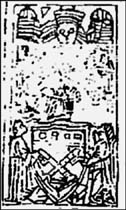
Deliberate acts of extension, even if based on an unconscious sense of alienation, may compulsively engage beyond bondage.
Along with the Templars, the Orders of Knights Hospitaller and Teutonic Knights became repositories of knowledge and experience regarding all aspects of the Near East. Their knowledge expanded to include familiarity with merchandise, politics, and religious ways of Central Asia, India, and to a degree, China. By the time of the Crusades, Sufi culture and trading was held in high regard by ruling classes through most of Asia.
Between the Fourth Lateran Council (1215) and the Fifth (1512), Popes invited representatives of lay rulers to attend universal councils previously limited to ruling ecclesiastics. It was recognized by the Bishops that a crusader, be he of the peasant laity, minor clerics, or powerful knights, inevitably would have his worldview expanded. This would in turn loosen the bonds of dominant, hierarchical authority determining his moral beliefs and constraining his independent actions. The only way to handle this was to begin including laity in international Church politics.
Bishops held limited control of Christian activities in the Holy Land. The networked Order of the Knights Templar was in many ways wealthier; more organized, loyal, and efficient; and perhaps culturally and technologically more knowledgeable than either the Church or any of the European courts. Although the Temple was sworn to Papal fealty, beholden to the Pope (and only the Pope) for its very existence, it had become a powerfully unstoppable organization in its own right. Church officials were dependent upon Templar advice and assistance in their directing of the Crusades.

A woman’s and a man’s work naturally develop through a marriage of opposites; for Temperance is an inheritance of prior intercourse maturely discriminated through labor and clarity.
No people were more in a position to take advantage of this radical shift in political, intellectual, and cultural authority than the Venetians. European society was undergoing a major evolutionary jump, and it was in a handful of cities such as Venice where manufacturing of goods, trading of services, and designing of arts could emerge on a global scale. Whereas monastic authority held sway in the country, a new form of secular, civilly evolved authority took hold in the cities. Here, artistic skill could find an outlet; apprentices for the crafts were plentiful; fairs were regularly held; educational institutions were up-to-date and broad-minded. Perhaps most importantly, channels to global markets were open and accessible. Northern Italian cities led the way in this communal evolution; French cities, which historically were socially and intellectually ahead of the rest of Europe, followed closely behind.
Recalling chapter 1’s examination of the Tarot’s early history, we note that the pattern of Tarot production, dissemination, and utilization matched a larger template of international relations in the late medieval period. Through the merchants of Venice, the standard deck of playing cards, followed by the Tarot deck, became known to the northern courts of Italy. With the fall of Constantinople and an influx of Greek scholars into Ferrara and Florence, everything Greek became part of a courtly fad and was therein socially legitimized. Spiritual hierarchy interpreted through Pagan forms of classical Greek symbolism and allegory could be identified with by court ladies in a way that avoided Church retribution, even while symbolically usurping its dominant, exclusive authority. This chapter suggests that the warrior and merchant castes so prominently found in Venice were able to strategically, structurally, and systematically implement aspects of that hierarchy.
New patterns of lawmaking formed in Italy in the late medieval period, as communities addressed their evolving needs. This was as true for the Order of Knights Templar as it was for the city of Venice. Decentralization of dominant authority – away from the exclusive control of Emperor and Pope, so to speak – served as groundwork for the modern development of humanism. Temperance and Love flourished, at least in Romantic literature and bardic songs; certainly there is much evidence for such in Turkish and Moorish Sufi communities surrounding luminaries such as Rumi and Ibn  rabi. Italian communities during this late medieval period experienced a major revision concerning how hierarchical authority could authentically emerge. Italian communes began holding their own parlementa in large churches. A judicial system arose with the right to measure Justice outside of papal oversight. Like ecclesiastics, judges held special knowledge – derived largely from Roman jurisprudence, a body of law preceding Christianity. Qualifications, lengths of tenure, responsibilities, and accountability for judges were determined by the city-states, not the Church.
rabi. Italian communities during this late medieval period experienced a major revision concerning how hierarchical authority could authentically emerge. Italian communes began holding their own parlementa in large churches. A judicial system arose with the right to measure Justice outside of papal oversight. Like ecclesiastics, judges held special knowledge – derived largely from Roman jurisprudence, a body of law preceding Christianity. Qualifications, lengths of tenure, responsibilities, and accountability for judges were determined by the city-states, not the Church.
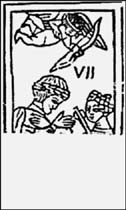
Innocence obeys the compulsion of truth; the arrow of Eros is a flame of compulsion to commune.
One of the most prominent creations of Roman law was the institution of universitas. Translating simply as “a whole body,” this became known more generally as a corporation. Structural concepts involving the creation and maintenance of corporations had been developed into a sophisticated model by the Romans. Italian city-states used that model as a foundation for the formation of guilds, associations, and fraternities. These corporations autonomously embodied a microcosm of communal life. Recreational, charitable, vocational, religious, and often secret (guilds protected the knowledge of their trades, be that of materials, methods, contacts, or designs), these societies contained natural, actualizing hierarchies involving authenticated stages of initiation, apprenticeship, and mastery.
Such newly established civility was marked by a positive emergence of hierarchical order in a world rife with atrocities of warfare. Often, the most inhumane battles occurred under flags of religious righteousness. The modern world remains terrorized by ongoing threats and acts of destruction wrought by religiously provincial fanatics. Intolerant states of greed, ignorance, and hatred are conjoined with delusions of, if not actual indulgence in, unsustainable grandeur for a privileged, self-elected few. Cultivation of natural and sacred hierarchy is systematically displaced by fascistic mechanisms of domination, possession, and control. The Crusades were a prime example of this in an earlier era.
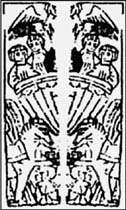
Be careful, lest aggrandizement of achievements so far constrict the feeling of accomplishment in humility.
The First Crusade met with considerable success; the Second less so. The Latin Kingdom of Jerusalem was all but destroyed at the end of the twelfth century by Muslim forces united under Saladin. The Third Crusade led by the kings of England and France recaptured some Eastern lands. By the Fourth Crusade in 1202, the city-state of Venice had become the major naval power in the eastern Mediterranean.
The Fourth Crusade demonstrated just how far apart the Greek and Roman worlds had diverged. Venice and her French allies conquered the Byzantine Empire. Their combined forces toppled Constantinople in 1204. In divvying up Byzantium, Venice gained numerous strategically located naval bases, including Crete. The Venetian empire had grown to span the Adriatic and Mediterranean Seas. Venetian commercial dominance throughout the area was assured. It monopolized the importation of Asian exotics such as spice and silk. These were then sold to German merchants, who distributed them throughout Europe.
Newly formed crusader states along the eastern border of the Mediterranean progressively contracted under constant Muslim insurgency. Nonetheless, trade between East and West steadily grew. Venice had well-established trading lines between Byzantium, the Near East, and the West, and was now competing for trade originating in Persia, Central Asia, India, and China. Everyone knows of Marco Polo and his travels to China during this time. The Venetian Polo family was based in Constantinople. Marco was befriended by Kublai Khan; because he spoke Persian he was allowed to freely travel throughout China. Promoted by Sufi merchants and artisans, Persian had become the lingua franca of Asia.
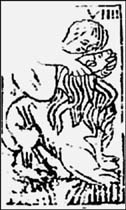
Tolerance and continuity of feeling assure a future of freedom; passionate arguments targeted at craving serve only to sweep away freedom into the silence of convicted bondage.
Western Christian Europe was largely ignorant of the tremendous developments that had influenced Eastern Christian lands and peoples since the fall of Rome some eight hundred years earlier. What is viewed as “the Dark Ages” by most Westerners was exactly the opposite for flourishing lands east. One of Marco Polo’s primary cultural discoveries was the prosperous integration of Nestorian Christianity with Buddhism – a cultural intercourse that had been thriving for many centuries. The Nestorians, we will later discover, played a critical role in esoteric exchanges between Buddhist, Sufi, and Christian academies.
All of the major countries and cultures of Asia had been trading and relating for millennia. China, India, Persia, Central Asia, and Asia Minor (now called Western Asia, which included Byzantium) had been actively exchanging goods, technology, slaves, artisans, medicines, and religious wisdom since the time of Alexander the Great (d. 323 B.C.). Moreover, for two thousand years before Alexander, well-established trade routes connected Arabia with the Indus Valley as well as with Persia, Central Asia, and the Tarim Basin of Western China.
In times past, Eastern goods, people, and ideas had to traverse long distances of land to reach the West. In the late Middle Ages, ship routes extended the old silk roads to include far quicker and more encompassing trading channels. The ports of Acre in Syria and Alexandria in Egypt were depots for caravan routes from the Far East. Whoever controlled trade to and from these ports controlled trade between the entire East and the West. Pisa, Genoa, and Venice spent the thirteenth century fighting each other to gain dominance in this trade. Pisa was beaten badly in competition early on, leaving Venice to battle with its greatest foe, Genoa.
For much of the thirteenth century, Constantinople was allowed to fall into ruins by its Latin rulers. Popes and Bishops in Rome never succeeded, however, in banishing the Greek Rite or the holy agency of the Eastern Pope (as the head bishop continued to be called in the Coptic Orthodox Church of Alexandria), who we find represented, along with the Popess, in the Tarot. The Ecumenical Patriarch of Constantinople served Greek Christendom as its head Bishop, just as the Bishop of Rome served as Pope for the Latin Rite. Greek Patriarchs of the Church were allowed to have a female partner – a simple fact that speaks volumes regarding the feminine-inspired origins of the Triumphs. Bishops often had a lifelong female spiritual assistant – the two holding to varying definitions of celibacy. In the modern day, Eastern Bishops are chosen from the rank of celibate monks. However, Priests are usually married, and their wives retain the traditional title of Priestess.

Carry the world upon your shoulder, striving for success, and you will discover luck gracing another more innocent youth, unaware of life’s sacrificial demands.
Although early Empress, Popess, Emperor, and Pope Triumphs were painted with Italianate symbols (e.g., the Roman Pope’s triple-tiered crown), the overall symbolism of the stations remained Byzantine. The Empress’s role and level of societal respect broadly held, for instance, were considerably greater in Byzantine civilization than in comparable roles found within Italian or French courts. The validity of an Empress’s rule, whether as consort or regent, was entirely recognized. She generally commanded considerable wealth; often appeared on coinage; established churches, monasteries, and institutions for the poor and sick; and was likely chosen in marriage because of a high degree of publicly recognized beauty. A strategically political or elite background was not of high import in the choosing of an Empress, and thereby she served as far more than a pawn upon a political gameboard. In other words, she was truly an Empress, just as the Popess was likewise. Helena Dragaš, wife of Manuel II, Byzantine emperor from 1391 to 1425, was one such Empress. Helena in many ways exercised more power than her husband, who was effectively a vassal of his friend Ottoman Sultan Mehmed I (1402–1421). The last two Byzantine emperors were her sons, and during her final years she served as Regent.
In the face of contrary powers rending the world, walk carefully in solitude and pursue virtue via synthesis.
There existed a rich cultural climate of sexuality and visionary Love in lands that were once Byzantine. It is significant that female dancers from the territory were in high demand in courts throughout Asia. Male Sufi dancing and devotional rites of initiation involving music, sacred imagery, and other arts were emerging in full glory during the late Byzantine era. Esoteric Christian disciples commonly crossed over into participation with Sufi communities. Persian arts and Turkish arts integrated. Patterns of Greek concubinage and sexual relationship were strongly influenced by the surrounding social milieu; these included practices of tantric alchemy practiced in extended families of prominent men who often kept more than one wife, if not a small harem.
The Tarot, with its prominent inclusion of female spirituality, arose from an esoteric Eastern Christian–Sufi culture that immortalized Eros. This, the court women of Italy could embrace and celebrate. Had it been otherwise, the Tarot would never have been disseminated beyond the reach of Roman Catholic hierarchy and scholastic theology.
After the Roman clerics, Venetians, and French were finally chased out of Constantinople, it took all of the Greeks’ resources to rebuild it. This required dismantling the Byzantine naval fleet. Consequently, Genoese merchants took over the Empire’s maritime commerce. Venice of course did not simply concede its centuries-old position of dominance in Byzantine trade. Instead, it bombarded Constantinople until the city, militarily unable to stop the siege, reinstated Venice to its former position of influence. During all of this European infighting, the Islamic Turks were uniting under a chieftain by the name of Osman. His followers came to be called Osmanli, known in the West as the Ottomans. By the time of Osman’s death in 1324, Ottomans ruled most of what were once Byzantine lands, including Turkey.
It was during the Venetian reign of Constantinople that the famous Sufi poet Rumi lived, teaching throughout Turkey. More importantly for our study, this was also the era and country of Ibn  rabi, introduced in the next chapter as an (if not the) original source of the Triumphs’ hierarchy. Latin interference with Byzantine rule ironically led to Greek Emperor Cantacuzenus’ alignment with the Ottomans via the wedding of his daughter to Sultan Orhan. In the century that followed, Constantinople, along with the rest of the Greek Empire, was subsumed by Islamic culture, community, and law. One benefit of this cultural/religious takeover was further dissemination of wisdom-teachings translated, elaborated on, and practiced by East-West networks throughout esoteric Christian, Judaic, and Islamic communities of the Mediterranean. We will examine some of these teachings in later chapters.
rabi, introduced in the next chapter as an (if not the) original source of the Triumphs’ hierarchy. Latin interference with Byzantine rule ironically led to Greek Emperor Cantacuzenus’ alignment with the Ottomans via the wedding of his daughter to Sultan Orhan. In the century that followed, Constantinople, along with the rest of the Greek Empire, was subsumed by Islamic culture, community, and law. One benefit of this cultural/religious takeover was further dissemination of wisdom-teachings translated, elaborated on, and practiced by East-West networks throughout esoteric Christian, Judaic, and Islamic communities of the Mediterranean. We will examine some of these teachings in later chapters.
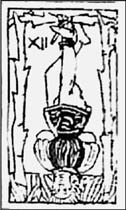
Hold adamantly to the truth of that which cannot be spoken, for an awful double-bind trap ensnares those with observant eyes but bound emotions who feel compelled to advise.
In a final act of Christian desperation, in the years before Constantinople’s inevitable fall to the Ottomans, Greek and Roman Churches attempted a reunion. This was propelled forward by the hopelessness of Greek Patriarchs attempting to maintain sovereignty over any Eastern lands without military commitments of aid by European crowns and necessary blessings of Latin Bishops.
In order to negotiate and finalize a reuniting of Eastern and Western Churches, a seven-hundred-strong Greek contingent arrived at Venice from Constantinople in February 1438. Venice was the only agreeable meeting ground that allowed proceedings to be initiated. It is of note that Venice was home to a primary monastery of Camaldolese hermits, which was established in the first half of the thirteenth century. (This was at a time when hermits importantly served as spiritual guides to the Templar Knights, whose primary base was in Venice.) The prior-general or head of the Camaldolese was a Florence-educated humanist (indicating in large part familiarity with and positive embrace of Greek studies), Ambrogio Traversari. Ambrogio had a great liking for Greek Orthodox Ecumenical Patriarch Joseph II (served 1416–1439). Joseph’s years were coming to end (he died in his eighties in 1439), as was the many-centuries history through which Venice and Constantinople were intimately bound together.
Forgetting the way of alchemy is a sleepy precursor to the draining of vitality and dissipation of essence; so it is fortunate that in the nature of alchemical life there is a propensity to remember anew.
Venetian diplomacy was critical in the bringing together of these two quite foreign communities and cultures. For instance, Venetians calmed Italian ecclesiastics when the Greeks demonstrated seemingly disrespectful patterns such as not taking off their hats at appropriate times and – significantly – when the Patriarch greeted the Pope as Brother. (The Patriarch was aghast at the concept of kissing the Pope’s feet, which he did not do.) The Greeks stayed in Venice for a month, assessing arguments and approaches made by competing Western Church factions, and becoming familiar with their Latin counterparts.
Up to this time, Byzantium’s primary contact with the Latin Church was via the Franciscan monastic presence in Constantinople. Roman bishops had a very limited knowledge of the Greek Rite and Eastern Christian theosophy, as almost none of them spoke the language and, as mentioned, there existed relatively few translations of foundational Eastern Christian texts. Prior to the Greeks’ participation in the Council, Franciscans had for some years (perhaps seriously beginning with Franciscan Antonio da Massa’s negotiations with Joseph II in 1422) been preparing the ground for an Eastern reunion with the Western Church. By the 1430s, Constantinople was sufficiently under threat of being sacked by the Ottomans, and Pope Eugene IV was likewise under threat of being “sacked” by the Conciliar factions of the Church, that both saw good reason to attempt a formal and fortifying rapprochement.
The Greeks had agreed to be taken to Venice via the Pope’s ships and not the ships of the Conciliar factions, who held that final authority in spiritual matters resided with the Roman Church as a corporation of Christians, embodied by a general church council, not with the Pope. Ecclesiastics of the Conciliar movement, which had a history of establishing and declaring alliance to anti-Popes, were holding an ecumenical council in Basel and were not agreeable about starting another council in Papal territory. The Greeks had indicated the direction their political diplomacy was taking, but spent their month in Venice listening to all sides. The Pope and the Ecumenical Patriarch (whose counterpart in the Coptic Orthodox branch centered in Alexandria was and still is called “Pope”) then moved on to commence a new ecumenical Council of Ferrara.
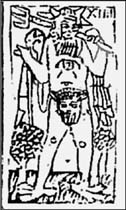
Will and imagination, houses of water and fire – abdomen and chest – either merge into concordant union or perversely constitute the generation of demons; such is the difference between alchemical realization and fascistic psychosis.
As mentioned in chapter 1, Ferrara during this period was under Venetian influence even while it closely associated with Milan. Florence brought sea-and-east-oriented Venice deeply into Italian politics (after centuries of guarded isolation from such) when Visconti took into its domain Venice’s old foe Genoa. Milan and Naples then threatened to capture Florence, which appealed to Venice for assistance. Both cities were culturally and intellectually inclined toward Greek humanism. The Venetian decision to go to war with Milan permanently changed Italian politics. Over the next few decades, Venice gained control of much of Northern Italy.
Ferrara became an uncomfortable place for the Greeks when Milan-paid condottiere Nicholas Piccinino showed up. Piccinino had been leading the takeover of nearby Papal States. The Greeks at this time sent back all the valuables in their possession (except their vestments) to Venice. In 1439 the Council was moved to Florence for reasons of safety, including avoidance of the plague.
According to detailed comments made by Silvestros Syropoulos, the renowned Greek secretary of the uniat Council, the Greeks found the Italians’ process of ongoing rhetoric and incessant focus on Aristotelian philosophy (in contrast to Neoplatonic) to be exhausting and of little value. Many of them returned to Constantinople in October 1439. An agreement to reunify was established, although the population of the East in the years proceeding thereafter effectively vetoed it.
After the Council, Eugene IV sent Franciscans to establish contact with Eastern Coptic, Ethiopian, and Jacobite Churches in order to obtain their ecumenical agreement with the tentative East-West proclamations of a unitive, truly Catholic (meaning Universal) Church. The Franciscans had limited success. In 1441 Venetian merchants served as negotiators and translators in Alexandria with Coptic Patriarch John. Later that year, John sent as Coptic representative Andrew, Abbot of St. Anthony, to Florence with his Venetian companions, the latter translating his Arabic into Italian and Latin and helping to convey the Coptic Church’s positions regarding the matter of unification.

Do not confuse the Tree of Life with the Tree of Knowledge of Good and Evil; the former dwells in Paradise, the latter – conscious mind aware of duality but not Unity – resides only in man’s fabricated realms.
Manuel II, Byzantine Emperor from 1391 to 1425 (seated as such only through the assistance of Venice) and father of Emperor John VIII Palaiologos who attended the Council of Ferrara, did not believe that citizens of his country would ever agree to attend a Mass that incorporated the Latin Rite. He suggested to his son that he do no more than draw out ecumenical discussions so as to keep the Ottomans in doubt as to Constantinople’s military and economic support from the West. In the end, he turned out to be correct.
As mentioned previously, the hand-painted Trionfi first appeared in the courts of Italy during the years encompassing this extended gathering. The present work suggests that the Tarot hierarchy was formally interpreted to aristocratic Italian intellectuals during the Council by visiting Greek scholars. Temporary union of East and West Churches initiated a rage in Italy for all things Greek, including metaphysical knowledge.
It was not until the end of the century that Catholic officials dampened this fascination. By then, there had occurred a rebirth in Europe of Greek cosmogony. At the forefront of this was popularization of Neoplatonic hierarchy concerning cosmic manifestation and spiritual realization. Italy had lost its roots since the fall of the Roman Empire and Emperor Constantine’s shift to lands east. A thousand years later, the Church found itself unable to arrest a significant permeation of European intellectual thought by Eastern esotericism. With an Italian rebirth and institutionalization of Greek philosophy under Oriental influence, the age we now think of as Europe’s Renaissance entered its maturity.
By 1477, there lived in Istanbul twice as many Muslim Turks as Greeks, a large number of Jews, some several thousand Europeans, and two or three hundred Gypsies. Eastern Orthodoxy continued to thrive, but it existed in the shadow of Sufism. Within the city, there existed three hundred dervish monasteries (literally the houses of “mendicants from Persia” offering sacred enclosure for the ecstatic sensuality of Rumi’s lineage). Every large mosque housed a hostel for mendicant dervishes. Each of the thirty-odd dervish orders had unique ways of communing with the Divine. All agreed that a series of stages had to be engaged and passed through to attain immortal communion.
The House of Felicity, or royal harem, also had its distinctive rites of passage. The female community of concubines and consorts peaked in political potency during the late sixteenth century. A Venetian wife of the Sultan initiated a period of rule marked by the significant influence of royal concubines. We will have cause to reiterate in the following chapter that Sufi teaching in Turkey celebrated sacred aspects of female sensuality and tantric communion.
In following centuries, modernist forces displaced Sufi law throughout most of the Islamic world. Modern-day Istanbul has striven hard to remain a realm rich in both Sufi culture and international trade. The former has unfortunately been corrupted, although Istanbul remains a largely tolerant and exotic Muslim haven. Religious intolerance promoted by fundamentalist camps in both Islam and Christianity in no way compares to the universal Temperance and Love evidenced in nondual East-West philosophies, including Rumi’s and Ibn  rabi’s schools of Sufism. Through its essential imagery, the Tarot exemplifies the most beautiful of those philosophies.
rabi’s schools of Sufism. Through its essential imagery, the Tarot exemplifies the most beautiful of those philosophies.
After the fall of the Byzantine Empire, Venice retained rights to free trade in Istanbul, signing the Ottoman Empire’s first treaty with a Christian power. It not only dominated trade with Ottoman lands, as it previously had with Byzantium, but also with Alexandrine Egypt, world depot for Eastern-grown spice. Portugal was to become Venice’s only competitor in this highly lucrative market. Portugal became a major seafaring power in the fifteenth century in large part due to reformation of the once Venetian-based Order of the Knights Templar, who went on to create the Knights of Christ in Portugal.
As mentioned in chapter 1, it is in Alexandria that the popularization and distribution of early playing cards can be found. Recall that in Alexandria we also found a remnant card identified with the Budapest woodblock Tarot. As we explore in following chapters a most fascinating esoteric network connecting Egypt, Spain, Persia, and Byzantium, we will discover how arts of alchemical spiritual practice were fused in Alexandria and Venice through a unique integration of Eastern and Western wisdom. The Metropolitan/Budapest Tarot is a heartfelt, exquisitely remedial, even if somewhat crude, representation of that integration.
It is time we unearth the history of the Knights of Solomon’s Temple. Templar involvement with Venice was intimate and substantial. The knights’ domain encompassed Gnostic and Jewish worlds of Languedoc, Sufi worlds of the Near East, the Mameluke world of Egypt, the Roman world of Italy, the Frankish world of Northern Europe, Celtic worlds of England and Scotland, and the Eastern Orthodox world of Byzantium. Their awesomely extensive network was plugged into and grounded by the powerful families and guilds of Venice. Through these conduits, East and West communicated, exchanged, and developed in a complex interweaving from which transcultural order emerged.
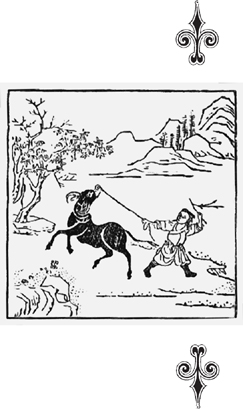
The founding Templar tale tells of Nine Knights, companions to Godfrey de Bouillon, leader of the First Crusade, banding together through faithful oath in 1118 to bring into being the Order of the Temple of Solomon. Their purpose was to guard Solomon’s Temple and its treasures, which lore professed to be great – possibly including the Holy Grail of the Last Supper. Ostensibly, they were also to protect the route from Europe into the Holy Land, but such work fell primarily upon two other holy orders of knights: the Hospitallers in the South and the Teutonic Knights in the North. Within a few years, the Knights Templar grew to a size of several hundred, becoming an important presence in the newly formed Kingdom of Jerusalem.
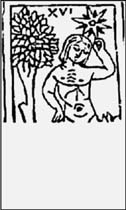
Cultivation requires tools, technologies of progress, which do not arrest movement by deadening cognition, but rather influence cognition to flow with living nature, thus precluding the need or desire for violent revolution.
The Templars were closely associated with the realm of Langue d’Oc (i.e., that of those who speak in the “tongue of Oc”), an area centered in southern France. The history of this territory is punctuated with mystical sects and romantic legends. Poets and bards from Languedoc wove tales of the Templar and their adventures protecting the Christian world. Two of the early Grail epics had Templar Knights as their heroes. Christendom at first questioned the combination of knighthood and monkhood. The chivalry of the Templar Knights, however, soon became the medieval age’s romantic ideal of manhood. Capable of spanning worlds, whether between Scotland and Egypt or Heaven and Hell, a true warrior-monk moved through corporeal aspects of life in order to realize transcendental states, if not immortality.
Spiritual enlightenment was not, of course, the sole or even main focus of attainment amongst the knights. Success during the first two Crusades promised the discovery of Christendom’s most powerful relics: the Holy Grail, Lord’s Cross, Apostles’ bones, etc. Spirit-power embodied by these items could transform not only lives and fortunes, but indeed whole territories and histories.
Then too, there was Oriental gold. In Western eyes, the East had access to gold reserves of almost unlimited proportions. Whether originating in Arabia, Persia, India, or China, these lodes of immortal wealth held the keys to world dominion. It was not clear if the Muslims drew on one source of magical wealth and the Mongols another, for knowledge of the East was based more on myth and fantasy than fact and experience. King Solomon’s Temple itself had traditionally been regarded as a repository of great material wealth, most certainly including gold. For fifteen hundred years, the East-West balance of trade had been heavily weighted toward Asia. The West had always desired Oriental goods and had always to pay with gold. Even with the breakthrough of Germanic mining techniques, gold was progressively becoming scarce in Europe by late medieval times.
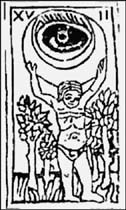
Spontaneous remembrance is intuition; intuited knowledge is gnosis; remembered knowledge is intelligence; intelligent spontaneity is wisdom; wise gnosis is the nondual awareness empowering universal healing and dissipating 10,000 diseases.
When Jerusalem was lost to the Saracens before the Third Crusade, Templar Knights came under the scrutiny of jealousy and political gossip. While viewed favorably when giving their lives for the extension of Christendom, they were critically appraised when they were unable to hold it. By 1200, questions were circulating in ecclesiastical circles regarding special privileges held by the Templars. They had grown into a substantial force of elite nobility, seemingly beyond the rule of both Church and secular law. With major bases in Venice, Alexandria, Constantinople, Tyre, Acre, and Cyprus, the Knights Templar could not be centrally controlled.
Rumors began circulating that the Knights were more interested in Muslim gold, political allegiances (particularly with the dreaded Assassins or Hassasin – hashish-taking Muslim warriors heavily into mind control), and esoteric rituals than with their duties to the Pope and European courts. Within the Church, divisions of clergy often disrespected each other (friars criticized parish priests, bishops criticized hermits, etc.), and lay criticism of Church politics was swelling in general. The Temple Order in its holier-than-thou position became a favorite ecclesiastical scapegoat for unsuccessful military campaigns. Because, however, Templars themselves did not command Crusades beyond the First, they could only be held so accountable for military losses.
In the romantic songs and epics of the day, knighthood took on its own ideal, spiritual attributes. Serving noble ladies, dealing with inscrutable Muslims, and heroically engaging their own personal quests for unity with God supplanted the knights’ need to practice monkhood. Practices of Oriental hermits, mages, and mendicants suffused the Templar Order. Stories of legendary knights such as King Arthur’s nephew Gawain spoke of salvation – a Christian version of immortality – being won through personal acts of merit and fantastic (even magical) acts of divine intervention. Church hierarchy and theological law were conspicuous in their absence.

There is no struggle in the supplication and receiving of the Sun’s wisdom; likewise, true knowledge is way beyond dialectics, oppositions, and all forms of analysis – the Sun Just Knows.
Templar involvement with romantic love became a popular theme of Southern French and Northern Italian poets. By the thirteenth century, the Order was being associated with stories of broken hearts. Just as a noble knight condemned for committing murder was left solely with an option of exile through joining the Templar Knights overseas, so it also became with love-stricken nobles. An honorable young man refused by a noble young lady was romantically expected to “commit suicide” via giving himself to the Temple.
An intense form of sexual/emotional sublimation instituted by the Templar Order carried over into Renaissance times. A practice of mind control intimately connected to sexual alchemy developed in Southern Europe during the fourteenth and fifteenth centuries. Later, this was most famously elaborated by Giordano Bruno, notorious for his advanced method of psychological magic involving knowledge of alchemy and eros. Bruno, a famous European court figure to be examined in chapter 4, was declared a heretic and burnt at the stake in 1600.
Military campaigns were not the only context in which Templars derived social status and acknowledgment. As the Holy Land was lost to Saracens, Templars turned away from their warrior roles. Literature of the era portrays Knights serving people through charity and acts of monkhood. Burying the dead, giving guidance and goods to pilgrims and wronged fugitives, advising royalty, and offering refuge to those in need of repentance were common Templar functions.
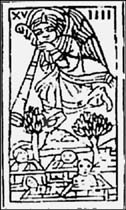
The Quest can be salvaged beyond acts of repetitive routine, cynical compromise, or naïve interpretation; isolate that which is already pure, already dead, all-ready consciousness.
Templar spiritual guidance, however, belonged to the province of Hermits, who served as spiritual guides to the Templars. For the first twelve hundred years of Christianity, hermits maintained a rarely publicized esoteric tradition bridging Eastern and Western Churches. Alexandrine Hermeticism was representative of wisdom-teachings espoused by such contemplatives. St. Francis, to point to a known figure, was a Western exemplar of the hermit tradition and community. We return to this highly influential and little known East-West spiritual lineage in later chapters.
As the Order of Solomon’s Temple withdrew its attention from Jerusalem and its physical temples, it fell back upon its European network to supply a reason for its continued existence. Neither the papacy nor the monarchs of the time could do without Templar insurance. This security took form as loans, trade contacts, political mediation, and international, multicultural expertise. From this arose a nascent industry of what might be termed risk management.
Military, mercantile, and financial liquidities of European kingdoms were dependent in large part upon the services of Templar and Hospitaller Orders. Brothers of these and the Teutonic Order frequently served as the closest of papal and monarchical advisors. Even in the Muslim world, where rulers often fought each other, Templars were brought in to advise the most powerful of sultans. The general attitude of kings East and West, and above all the popes, was that no one could be trusted more. Thus, we find Templars serving as royal diplomats, treasurers, judge-delegates, and trustees of the most valuable royal properties. This was to change in time, however. In the later years of their existence, Templar Knights were viewed as totally treacherous by most Muslim leaders, who had no compunctions about slaughtering them in their beds, if possible.
Templar land holdings throughout Europe were equaled only by those of the Hospitallers and the Church. The Order’s lavish houses, numbering in the many thousands, were protected against any interference by either Church or State. A right to hang the Order’s red cross over one’s house, should one fall at odds with one’s king or prelates, was sold by the Holy Order of the Temple. This gave them the power to safeguard criminals if they so chose. In most European countries, the Order acted as a repository for tax collections. It often safeguarded crown jewels, paid royal pensions, and ran what were essentially the central banks and gold reserves of the era. The Temple’s letters of credit were honored throughout Christendom.
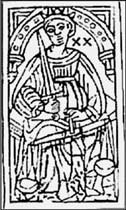
Bridging mercy and fierceness is the crown of divinity, authority of the Just; the Balance, the Sword, and the Throne instill continuity beyond the temporality of life and death.
Venetians inherited the Order’s worldwide banking authority. Only the international Jewish banking community and the network of Genoese merchant houses had similarly established networks. The most powerful families in Venice numbered two dozen. The society of Venetian nobility was limited to one hundred and sixty great families. From these were drawn some two thousand or so men who held all military, mercantile, and political positions of consequence. This communally inherited hierarchy was quite unlike the democratic, relatively open structure of Genoa. Partly for this reason, each of the three knightly orders made its primary base in Venice. Over several generations, tightly sealed bonds were established between influential Venetian patriarchs and the Templars. Through this, an internationally operative hierarchy emerged distinct from Kingdom or Church.
Without a doubt, the newly emergent merchant class of Venice found its Templar alliance to be highly beneficial. Neither political nor spiritual interests lay at the foundation of this, but rather economic benefits. The concept of economy was, in the medieval era, still associated with its old Greek meaning of “household management.” It would not be until centuries later that national and international economics would become part of the vernacular. In this, the Venetians were at the forefront of social development. Accounts from Provence and England recite conflicts between middle-class merchants and the knightly Orders. From the vantage of many ordinary burghers, the Orders were given unfair trade privileges. The Venetian merchant class, however, was the wealthiest and most powerful in Europe. Thus, they operated on a level equal to the Templars. Again, from this sphere of influence, new patterns of sovereignty and hierarchical actualization took hold in Europe.
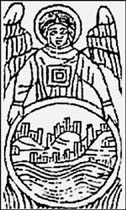
Every contraction demands release, every being demands liberation; how can there be a state of Universal Liberation and still exist a world of beings, if not for the fact that the World itself is Realized as utterly simple Bliss?
In the south of France, a Gnostic branch of Christianity developed which has often been associated with the Templars. The Cathars (from a Greek root meaning “pure ones”), attended a hierarchical teaching involving the ascent of one’s soul in a return journey to the Divine Domain. The sect was strongly dualistic in its understanding of gnostic perfection. Cathars held that the physical world was irrecoverably corrupted. Only a strict path of asceticism could deliver the Gnostic soul from its fallen body. Such beliefs lent themselves to practices of severe austerity. However, on occasion they also supplied justification for loose sexual mores. This contradictory morality was also found amongst the Templar community. Sinning in the body, so to speak, was at times viewed as naturally inevitable for those who were not fully trained in the way of the perfecti. Experiencing that inevitability with abandon was not necessarily judged any more negatively than living a mediocre moral life. It is not surprising that this path of purity involved purifications that the Roman Catholic Church deemed to be heretically abominable.
The Church backed the King of France in a Crusade against the Cathari. Ironically, the Cathars themselves had played a significant role against Muslim forces in the First Crusade. Languedoc and the neighboring Court of Provence, home of the Cathars, were tightly connected to the Order of the Temple. The Albigensian Crusade (named after the sectarian heresy with which the Church branded Cathars; Albi was a Cathar town) foreshadowed the pall of heresy which was to hang over Templars until their destruction in 1307. The Order had never denied the Church or monarchs its assistance in previous Crusades, for this was the purpose of its existence. However, it refused to take up arms in this most questioned of holy wars. The Temple hid from the Pope whatever connections it had with Cathar noblemen, which were likely numerous and rich.
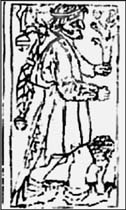
Suppress the rational mind and it will undergo atrophy, overdrive the rational mind and it will discover efficiency; it is through efficiency, not feebleness, that the Fool translates miracles for the court and the commons.
Before the Albigensian Crusade, Cathars had decided upon a position opposing the concept of a military order of spiritual knights, holding instead that true Christians should neither war nor proselytize. This doctrine had a considerably demoralizing impact on the Templars, for they seriously respected Cathar guidance. By taking a pacifist position, Cathar annihilation at the hands of the Pope’s army was guaranteed. It is worth noting that there is no recorded instance of antagonism between Cathars and Templars. In the Treaty of Paris, the signing of which ended the Crusade in 1229, the Order of Knights Templar was listed as a neutral party.
In the years between 1160 and 1180, a circle of Jewish metaphysicians brought together in Provence an Oriental literature of Gnostic persuasion with fragments of Jewish-gnostic teaching. This formed the earliest of Kabbalistic documents: Sefer ha-Bahir, or the “Book of Brightness.” The origins of Kabbalism are of significant relevance to our study of Tarot origins. A link between this crystallization of the Kabbalah (from a Hebrew word denoting “received doctrine”) and Gnostic understandings of the Cathars is quite possible. Certainly, an influx of esoteric knowledge stemming from crusader involvement with Greek and Arabian worlds affected the metaphysical development of this territory in general. We know historically that the first Kabbalists regarded as Masters came from noble, estate-holding Provençal families. We also know that there existed a teacher-pupil chain linking esoteric Judaic circles in Barcelona (present-day Catalonia) to Narbonne (present-day France).
In the next chapter, we will examine profoundly important Sufi developments that occurred in Spain during this era. We will see that these were of primary influence to the original development of the Kabbalah.
Templars, Cathars, and Kabbalist masters adhered to a strict code of secrecy and coded communication. Such a way of exchanging knowledge was used throughout the great traditions. This was done because knowledge so refined and integrated necessitated subtly symbolic transmission. Metaphors, double entendres, and words of complex or subtle meaning have been employed within every culture to convey esoteric concepts and realizations. Kabbalistic teachings were indecipherable to those who were not studied and practiced in Jewish cultivation of in-depth contemplation.
However, influenced by Gnostic tradition, some members of the Kabbalist community intentionally obscured subtle knowledge for occult, dualistic reasons. This was rationalized as necessary in order to control satanic forces or block access to secret knowledge and powers from those who were outside of the initiated circle. One may realistically suggest that such obscuration has been historically tied to simple ignorance of true esoteric knowledge and spiritual realization. On the other hand, it may also guarantee a pure line of transmission by keeping powerful knowledge from being misinterpreted by those unable to truly authenticate it.
We shall see that twelfth- and thirteenth-century Sufi esotericism and Kabbalism had much in common, but that the former was far deeper and broader in its corpus and academy. Gershom Scholem, the twentieth century’s greatest Kabbalah scholar, held that Sufi metaphysics did not draw upon Kabbalistic studies. Both traditions, rather, independently drew upon Neoplatonic and Gnostic roots. However, the Sufi corpus of translated Greek works preceded the Jewish corpus by many centuries. Therefore, it is not surprising that evidence points to esoteric Jews drawing on their Eastern Christian and Sufi Islamic brethren during the centuries covered in this and the following chapter.
Strong Judaic and Babylonian roots of Gnosticism will be exposed in chapter 5. Many Sufi sages abandoned those in favor of an emphatically nondual, Neoplatonic understanding of hierarchical emergence. In any case, it is of import that intensely knowledgeable elaborations of hierarchical, ten-stage/twenty-two-station worldviews arose within contemplative communities of multiple cultures at this time.
Knights of the Temple extensively infused the territory of Provence by the turn of the thirteenth century. This was, after all, the Order’s country of origin. Similar to the Templars, wealthy Provençal Jews were connected to an international banking network. The Venetian banking world brought these two communities together. Unfortunately, extant documentation evincing contact between Judaic patriarchs and Templar Knights is minimal. The relationship between the two remains a topic awaiting further research.
In 1307, King Philip of France, tremendously indebted to the Order, ordered a mass arrest of the Templar Knights along with seizure of all their property. His hope was that by doing so he could consolidate their enormous wealth under his temporal power. He gained the Order’s estates, but was unable to keep their huge treasury and fleet from escaping the country.
Kings and popes had been for some years refusing to assist the Templars in maintaining their holdings throughout the Holy Land. This took a toll on the Order militarily, drawing its forces very thin. The Knights were not inclined to abandon all relationships with the East. They spoke Arabic, banked for Muslims, and wore long beards like Muslims. They were dedicated to the Virgin Mary, who was accorded significant status in the Koran, far more so than in the Bible or Catholic dogma.1 The Templars had established their spiritual home in a mosque built upon the Temple of Solomon.
Furthermore, they apparently believed in an esoteric cosmology closely related to Sufi teachings of the emanations and attributes of Allah. Suffused throughout Templar myths and legends was a romanticized paganism, which Sufis successfully integrated via Neoplatonic philosophy. Sufi placement of Death and Devil (named Slayer and Abaser) high in the divine emanation of Allah emphasized a nondual understanding that was heretical in exoteric Islam. This was no less so in Christianity. Like the Cathars of Languedoc, Templars believed in an inner course of the soul, which enabled them to personally quest for Divine realization. This esoteric doctrine was concealed from the uninitiated. Grail romances popularized general concepts regarding Templar heroism, including the quest for immortality. Battling to the death combined with immortal guardians to form the backbone of original Grail literature. Identification of an immortal guardian-knight with a legendary Keeper of the Grail thus developed.
Esoteric beliefs turned the Order into a target for accusations of magic and Devil-worship by Church authorities. Paintings from this age depict Templar Knights girded by a belt faced with a bearded head – much like the Metropolitan Tarot’s Devil. Worship of such a bearded head in conjunction with abnormal sexual practices formed the primary basis of heresy for which the Templars were accused. Association of beards with Muslim culture and brotherhood was strong. The Bearded Head was conjectured to symbolize a mystery rite referred to as Baphomet – a term generally thought to be a French bastardization of “Muhammad.” It is of interest to note that the famous Shroud of Turin originally appeared in the possession of Geoffroy de Charnay, who was burned as a heretic along with Templar Grand Master Jacques de Molay after the disbanding of the Order. The Shroud, it was claimed, was that of the entombed Christ and carried his resurrected, bearded image. Dionysian resurrection and immortality here wed.
On top of their secret rituals, the Order maintained strategic alliances with Venetians that were politically suspected by everyone west of Constantinople. By the end of the thirteenth century, spiritual and hierarchical arrogance along with immense material wealth were commonly being flaunted by the Knights. Agitated by Eastern aspects of Templar culture and the Temple’s self-serving political and mercantile allegiances, Western powers found little virtue in the Order; they thus decided not to block the King of France from pillaging it.
Unlike the Hospitallers, the majority of Templars were unable to elaborate rationally upon their philosophical beliefs. For whatever reason, an oath of secrecy was sworn by all. This serves as a classic example of how dualistic doctrines and secret rituals can create a politically dangerous “us against them” sectarian mentality. The precise beliefs of the Knights Templar never were extracted by the Church, although outrageous confessions were made under torture.
After being forcibly disbanded, many of the Templars went underground, surfacing later in Teutonic and Hospitaller Orders. There is evidence that some Templars took refuge in the Alps; Swiss villagers during this period suddenly and unaccountably exhibited high degrees of military skill. Templar influx into the Alps may also account for the arising of a powerful and secretive banking community that remains to this day.
A large portion of the Order reformed in Portugal as the Knights of Christ. The reformed Templars carried with them Arabic navigational knowledge, in particular the compass, advanced sailing rigs, and accurate cartography. Schoolchildren are commonly taught about Vasco de Gama and Prince Henry the Navigator, who were both Knights of Christ. The former was the first European to sail to India. The latter, known as the Patron of Portuguese Exploration, lived during the time that Tarot and Greek studies emerged in Italy.
It is possible that Prince Henry’s succession as governor of the Order of Christ, one hundred years after the destruction of the Templars, was reflective of Templar sexual practices. Prince Henry was by all appearances homosexual. Those men who were raised and loved in his private company subsequently commanded ships in his explorations.
As head of the extraordinarily wealthy Order of Christ, Prince Henry succeeded in exploring the coast of Africa and circumventing the Saharan Desert trade routes controlled by Muslims. This opened the way for Portuguese dominance in gold and slave trading. The Order of Christ propelled Portugal into a position of global power. Before the Dutch, Spanish, or English, the Portuguese ruled global exploration and trade. Modern-day Goa, India, and Macau, China, are two remnant islands of that once expansive merchant empire.
One of the points this book attempts to convey is that hierarchies are not always marked by domination pyramids. Hierarchies marked by actualization spheres are of far greater importance in spiritual, natural, and human domains. The latter defines stages of growth, development, and evolution. The two are not totally exclusive; one form may take advantage of the other. In reference to the Knights of Christ, for instance, dominion over slaves and control of trade routes put them for a short span on top of a domination pyramid, which was inevitably displaced by other military and mercantile powers. At the same time, however, exploratory feats and discoveries made by them opened a new era of societal development, as trade between East and West and settlement of the New World ensued. This actualized historical transformations that permanently advanced human civilization. While the new era of global trade could be slowed or temporarily arrested, it could not be totally reversed. Such is the way of hierarchical emergence.
Regardless of dominant factors, there ultimately is no stopping a broad and universal actualization of human potential and realization of transcendental awareness. Humans have an ability and innate tendency to develop, grow, and evolve psychologically, socially, and culturally. This native drive can be waylaid by domineering mechanisms of control for only so long. Domination is always destined to give way to actualization, even if that must first occur through the agency of warfare or otherwise transformative revolution.
In general, the history of this era was one of empires fighting each other for dominion. Bloody as that history may have been, in hindsight we can also observe a level of order emerging from this era so seemingly full of senseless brutality. That order was based upon a system of international trade, reasoned communication, and universal law. Patterns of this period, which preceded modern humanism, foreshadowed our current world. Unfortunately, religious provincialism has yet to give way to spiritual unity and universally intuited law. Nor has the modern-day military-industrial complex given way to a design revolution of socially and environmentally appropriate technology.
Our empirical, scientific age has established the fact that nature is ruled by universal laws. However, scientific materialism will never prove to be a panacea for cultural, social, or psychological health, wealth, and wisdom. Clearly, further hierarchical stages of human development will emerge as the world is transformed through the arrow of time. In any case, the Tarot Triumphs were generated through associations during the fourteenth and fifteenth centuries that symbiotically united, even if only temporarily, diverse traditional understandings of corporeal realizations, cultural symbols, and cosmic laws.
The Knights Templar and their Venetian allies served the world by abetting East-West transmission. In the next chapter, we will turn to a community of metaphysicians and mendicants who bridged mercantile, military, religious, and scientific worlds across Western and Central Asia, Northern Africa, and Spain. These Sufis returned the perennial wisdom of hierarchical realization and esoteric alchemy to the doorway of European awareness. Before exiting this chapter’s world of Crusades, politics, and trade, let us review the mostly lethal and occasionally ecstatic years between the fall of the Order of Solomon’s Temple in 1307 and the 1438 international Council of Ferrara.
In the Eastern Christian world, contemplative practices of ecstatic stillness came to the fore, becoming politically influential in Byzantium. Hesychasm involved a type of monastic or hermetically yogic life in which practitioners sought divine peace (Greek hesychia means “stillness”) through heart-contemplation of God. Such prayer involved the whole human being – body, mind, and soul. Hesychast practice was considered to be pure and intellectual prayer – that of genuine gnosis – while at the same time an esoterically physical form of contemplative cultivation. St. John Climacus, whom we will meet later, was one of the greatest realizers of the Hesychast tradition. In more recent centuries, St. Seraphim of Sarov has been viewed as exemplifying its way of truthful bliss.
Beyond the development and merging of Eastern Christian and Sufi esoteric yoga, the most significant movement in the fourteenth century was that of Death riding a horse of plague. Covering both East and West, this dominated all other forms of conquest. The Black Death was actually a series of plagues spreading from Northern Asia to Western Europe. These, combined with truly terrible famines, brought to the century a fifty-percent drop in population through much of Europe. It was during this time that Death was personified as a skeletal, scythe-wielding being. Death in the Tarot represents not only the end of mortal development and actualization in strictly human terms, but also the beginning of immortal realization and enlightenment in Divine terms. The Tarot’s Triumphant hierarchy pivots on this station as it shifts into that of the Devil.
The fourteenth century brought a massive depression to Europe. Khanates (or “realms of the Khans” – e.g., that of Kublai, conqueror of Song Dynasty China and host to Marco Polo) of the Golden Horde made trade along the northern Silk Road a very dicey proposition. In the south, Ottomans drove out all Christian presence along the Aegean Sea. The Hundred Years’ War between ruling western dynasties in England and France mindlessly raged. The lands of Germany were filled with chaotic lawlessness. In general, conflicts between feudal monarchs and their vassals progressively left more and more control in the hands of the people. Combined with a series of major peasant revolts, these fourteenth-century disruptions to the relatively simple societies of medieval Europe produced more catastrophe, chaos, and change than the continent had seen for centuries.
Europe’s masses naturally turned to the Church for explanations regarding the causes of so much strife. Solutions were sought that would guarantee supernatural assistance. Roman Catholicism, however, was often found wanting. Throughout the Crusading age, the Church had come to admit a need for direct spiritual experience by common folk. This was inevitable given extensive contact with ecstatic Persian communities in Byzantium and Moorish Spain, most prominently those of Rumi and Ibn  rabi. Romantic bards learned instruments, songs, and poems from these Sufi circles and their associated Greek and Catalan friends. They set afire fantasies in urbane Southern European minds that self-realization of Noble Wisdom and Bliss was possible; as was the attainment of magically powerful items that could ward off sickness and Death.
rabi. Romantic bards learned instruments, songs, and poems from these Sufi circles and their associated Greek and Catalan friends. They set afire fantasies in urbane Southern European minds that self-realization of Noble Wisdom and Bliss was possible; as was the attainment of magically powerful items that could ward off sickness and Death.
Of course, any Quest for the latter would perforce involve dangerous battles and seductions. Hermits like St. Francis showed the Way, transforming the militancy of Crusading madness into transcendental awareness. Outside of elite courts, an enormous impression was made by newly founded Orders such as the Franciscans. Mendicant friars played a controversial role in the burgeoning spiritual consciousness of lay circles; as had popularization of the Grail myths and idealization of spiritual knighthood. Stories of Robin Hood and his mendicant Friar cohort well reflect the social dynamics of this era.
The “universal” Church had been besieged by heresies in the thirteenth century, as many people had looked to messianic doctrines and new revelations of salvation. These movements continued through the fourteenth and fifteenth centuries, finally developing as a Protestant (from “protest”) Reformation. Tangentially emerging alongside new exoteric religious sects were evolved esoteric realizations represented by such enlightened individuals as Meister Eckhart (generally credited as founder of German mysticism in the context of perennial wisdom tradition).
Spiritual cultivators in the fourteenth century were witness to massive, heretical movements in Europe. Monarchs called into question papal appointments and ecclesiastical administration. In the period preceding the Tarot’s emergence, the King of France actually captured several popes, moving them from Rome to Avignon. This led to dual and even triple popes claiming reign, which served to do little other than to degrade the masses’ opinions of ecclesiastical authority and legitimacy.
By the time traders and scholars brought into Italy Greek and Sufi teachings pointing to nondual realization of the One, important nobles, artisans, and merchants were of a mind-set to pay attention. Still, understanding esoteric teachings requires authentic practice, and few folk have ever been in a position to dedicate their lives to spiritual cultivation. What did occur in Italy at this time, however, was formation of private artisan societies and elite, educated recreational circles. Examples of these can be found in the guilds of cathedral builders, which later Freemasons claimed lineage to, and cliques of classically trained court women entertaining themselves and their companions with sophisticated images, poems, and music of an esoteric nature.
Life in the plagued era preceding the Renaissance was not easy for international merchants. Venice was forced to turn to the Mameluke sultanate in Alexandria to obtain goods from the East. Memory of the Crusades was very much alive and the Mamelukes were a warrior caste sensitive to Roman Catholic conceits. In general, traders learned to be as literate and diplomatic as possible with their Muslim contacts. Instead of using Latin (language of the Church), Venetian merchants did business in the vernacular dialect of their city. In the previous chapter, we discovered the Metropolitan/Budapest Tarot’s use of the Venetian dialect and an association with Mameluke Alexandria. Given the Venetian proclivity for assuaging risks using higher knowledge, we can suppose that the Metropolitan Tarot truly was a merchant’s deck.
Merchant culture made extensive use of astrology during this time to guide most deal-making. The concept of risk expanded from an association with something determined by Fate to being associated with a fateful force whose course could be influenced. Advancing patterns developed by the Templars, the formalization of risk management can be found in this period. Fate and Force are represented by the mission-oriented fourth stage of the Tarot – the Chariot and Fortitude Triumphs.
The late medieval era ushered in a global transition to this stage. On a sociological level, engagement with this stage required more than military power and trade policies (second stage) along with political diplomacy and economic systems (third stage). It required a historical mission beyond provincial governance and support. This was reliant upon a continuous economic influx advancing genuine innovation. Necessary ongoing capital could no longer be supplied solely from Emperors or Popes – second-stage Triumphs of emotional resolve good for war and intensive construction, but not international diplomacy and market freedom. The fanatical drive of the Crusades was spent, basic trade lines were established, and cities were well built, awaiting repopulation after generations of plague.
In practical terms, the Venetian merchants who succeeded in capitalizing on fourteenth-century death and chaos were those with the means to sustain evolving channels of trade far into Asia via East-West networks. A continuous, self-sustaining state of growth marked these networks. An interdependent, global fate was embodied by them. From this emerged the spirit of our modern era, as the New World was discovered and populated, sciences were methodically developed, and teachers of global spirituality appeared upon the world stage. Modern history has shown that even in the domain of warfare, organic networks are as mighty as commanding empires.
Interstate economics and trade wedded with third-stage information technology (from woodblock cards to the printing press to telecommunications) produced a Media Age during the last five hundred years. This has progressively fractured the barriers of religious provincialism and dictatorial empires. Appropriate and holistic technologies of our currently proceeding fourth-stage Design Age promise to drive societies into a period of global reclamation, uniting laws of virtue and wisdom (call it “best practices”) from all of the great traditions. As humanity begins a new millennium, it will witness an age of global networks birthing an understanding of universal hierarchy. This will occur regardless of fanatical fundamentalism, fascist empire-mongering, and massive media brainwashing.
This chapter has served to elucidate historical development of second-stage political structure advancing into third-stage intercultural exchange and fourth-stage global networks. We extend our view from the West eastward in the next chapter. Cultural tolerance, diplomatic skills, and a sharp mind for quickly measuring factors involved with every decision of risk are what we might call third-stage essentials of intelligent civility. Venetian merchants, Greek scholars, and Sufi orders had developed by the time of the Tarot the Triumphant third-stage spheres of Temperance and Love. This maturation of social development prepared the way for a fated exchange between Sufis, Greeks, and Italians not only of cloth, spice, and gold, but – certainly as importantly – of integral knowledge: fourth-stage awareness of and hierarchical relationship through transpersonal and transcultural intuition. The European renaissance of perennial wisdom, cosmic evolution, and immortal principles of natural alchemy was very much indebted to the Sufis and Greeks. It is to this community that we now turn.
1. Mary’s Immaculate Conception was not proclaimed by the Church of Rome until the nineteenth century. The quintessential Catholic devotion of the rosary and its attendant Hail Marys derived from Muslim prayer beads used to recite the Names of Allah, a device and method of meditation having Buddhist origins. It was incorporated into Catholicism during the Crusade against the Cathars.